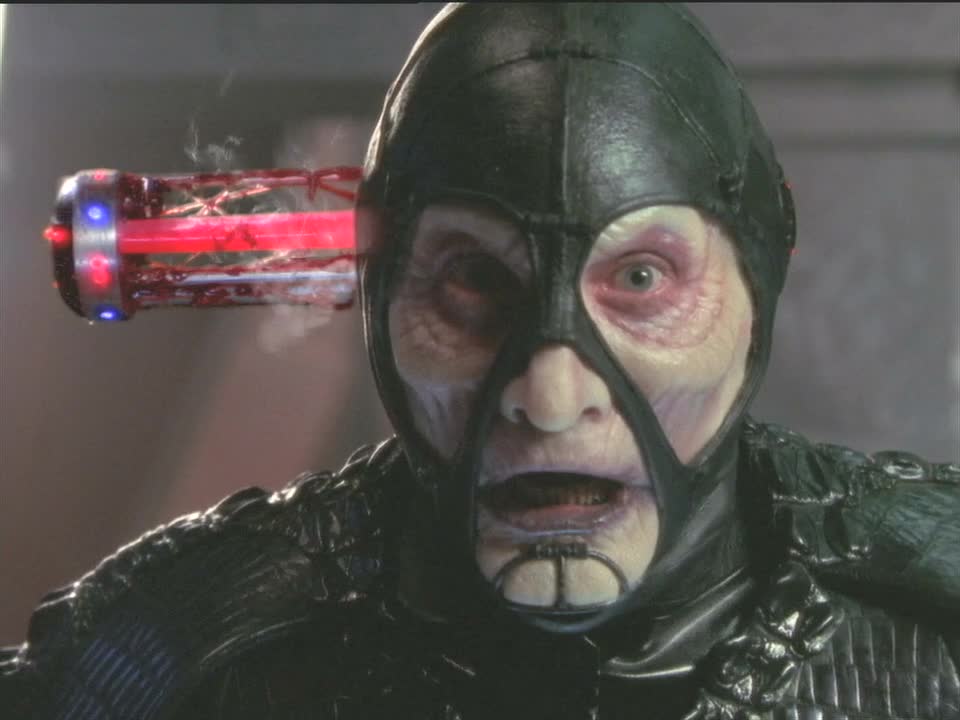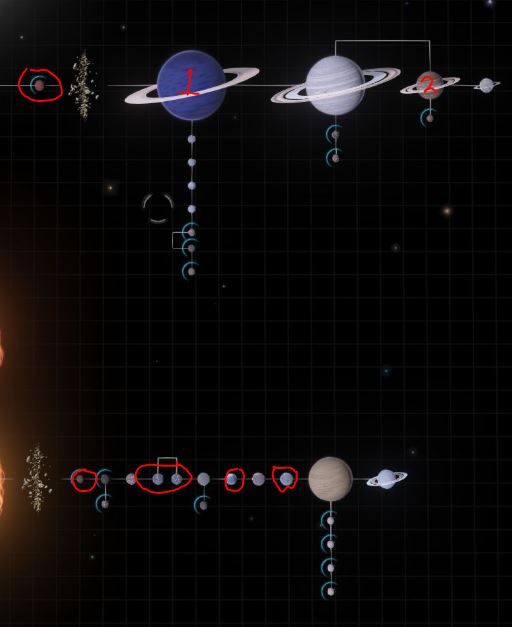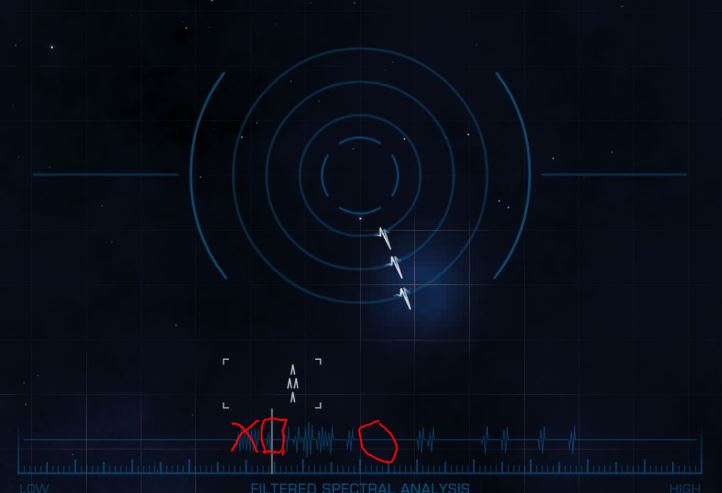I've been looking into regional differences while I'm going 'round the galaxy, revisiting some of my old finds, and I noticed something. The distribution of many POIs necessitates heavy cherry-picking, heavier than ever before, and in my opinion that's why the FSS has been designed to make that much easier. (And it's a turret because it had to be made for multicrew too.) Let me illustrate with two pictures.
Suppose you're looking for amphora plants. According to the Codex, they need the following:
1. The system must contain an A star
2. The system must contain any of the following: ELW, Gas Giant with Water-based Life, Water Giant
3. The planet must be Metal Rich
With those in mind, here's the system map we would have seen pre-3.3:

How soon can you tell if that system is a candidate or not?
Now, compare with the FSS graph:

As you can see, it's much easier to tell without any doubt - can even be done at a glance - whether the system would contain suitable candidate planets or not.
Problem is, until there's more gameplay involved with finding such stuff, there isn't going to be more than a few people looking for them. Personally, I was bored of these plants by the second time I've found them. The only biologicals that are at least slightly interesting are Thargoid barnacles - too bad they are confined to a few close-by nebulae. I think I can see now why Frontier decided to make getting credits and tags much easier.
Suppose you're looking for amphora plants. According to the Codex, they need the following:
1. The system must contain an A star
2. The system must contain any of the following: ELW, Gas Giant with Water-based Life, Water Giant
3. The planet must be Metal Rich
With those in mind, here's the system map we would have seen pre-3.3:

How soon can you tell if that system is a candidate or not?
Now, compare with the FSS graph:

As you can see, it's much easier to tell without any doubt - can even be done at a glance - whether the system would contain suitable candidate planets or not.
Problem is, until there's more gameplay involved with finding such stuff, there isn't going to be more than a few people looking for them. Personally, I was bored of these plants by the second time I've found them. The only biologicals that are at least slightly interesting are Thargoid barnacles - too bad they are confined to a few close-by nebulae. I think I can see now why Frontier decided to make getting credits and tags much easier.





